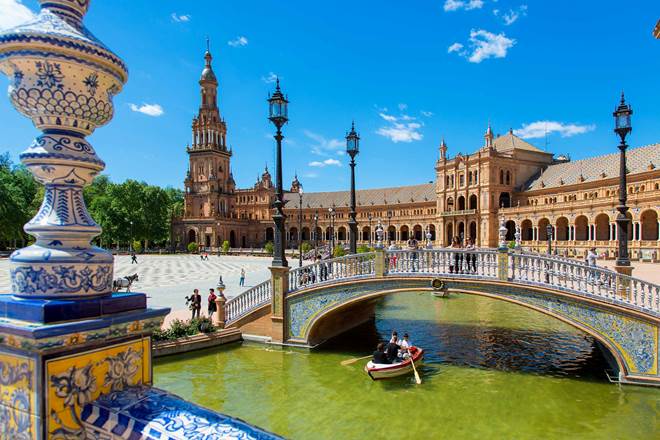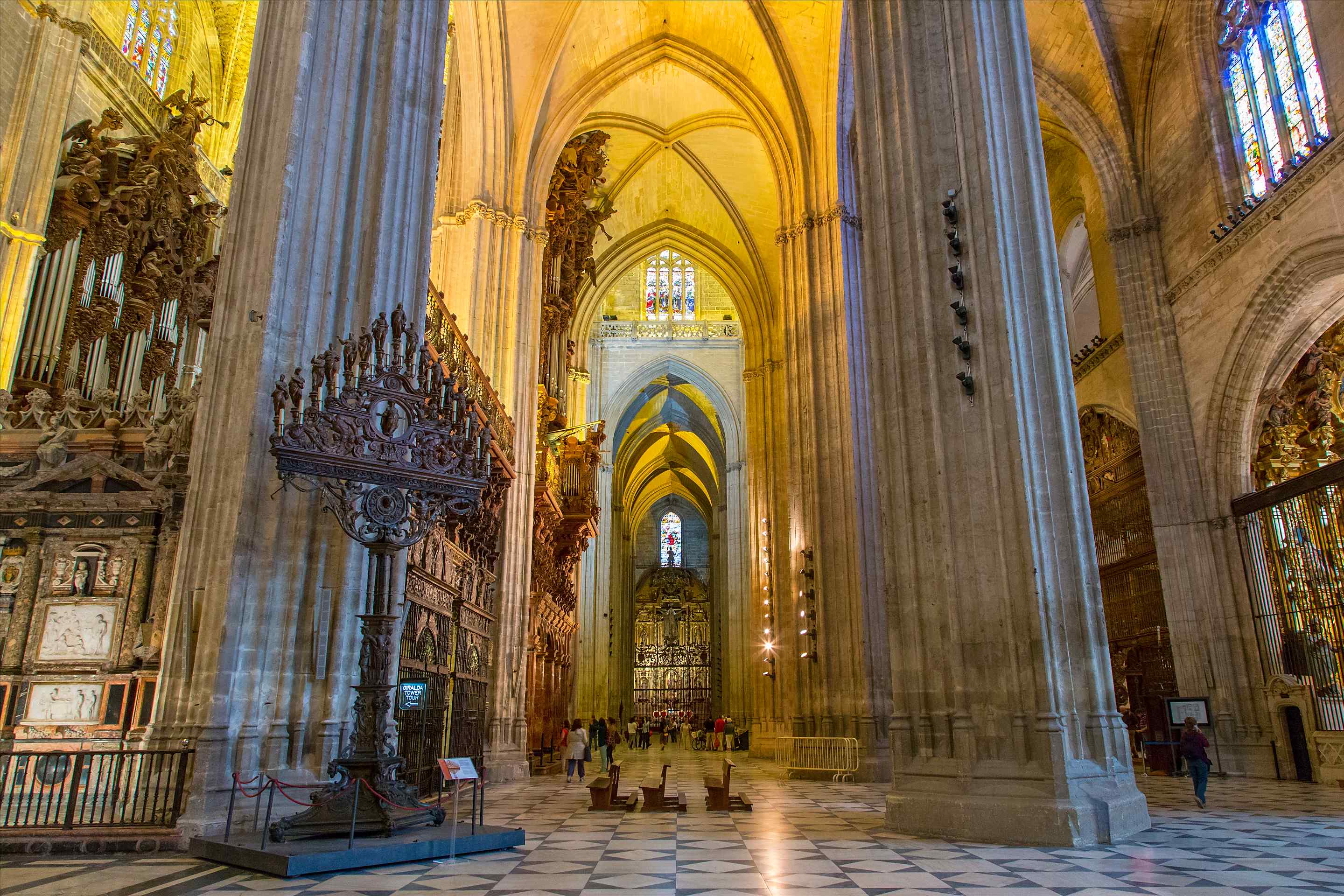Seville is one of the most beloved cities in Spain for a reason. It’s beautiful, charming, lively, and has not uno, not dos, but tres buildings comprising a UNESCO World Heritage Site: the Real Alcázar de Sevilla, the Catedral de Sevilla, and the Archivo de Indias.
Once the richest and most populous city in Spain, much of Seville’s stunning Moorish and Gothic architecture has remained intact for centuries and was even updated and built upon during the 1992 World’s Fair.
Miguel de Cervantes also wrote his famous novel Don Quixote while confined in Seville’s Royal Jail. So, it’s only appropriate that your trip to Seville be an epic quest full of fun and adventure. Cruise down the Guadalquivir River, enjoy tapas and Seville’s famous oranges, and meander through roads that have been trodden for over 2,000 years.
Here are all of your questions about what to do in Seville, answered. You’re welcome, amigo.
Header image Credits, Unsplash, Joan Oger. Location, Andalusian Parliament, Seville, Spain.
What should you not miss in Seville?
If you only have a limited amount of time to spend in Seville, you should absolutely visit the Real Alcázar de Sevilla, which is the oldest royal palace still in use in Europe.
The structure is a prime example of Mudéjar, a decorative, ornate style of architecture which combines elements of Romanesque, Gothic, and Renaissance styles to create something truly espectacular.
Walk through Real Alcázar’s many gardens, wax poetic in the magical Salón de Embajadores, and perfect your photography skills in the jaw-dropping Baños de Doña María de Padilla. Just note that the upper floors are restricted for the royal family themselves, whenever they pay Seville a visit.
P.S. For all you Game of Thrones fans, you might recognize the Real Alcázar from season five of the show.
Can you do Seville in 3 days?
Sí, you can absolutely see Seville in one or two days, but three is probably best. Visit the Real Alcázar, watch a flamenco show, and peruse shops in the Barrio Santa Cruz.
What are the top things to do in Seville?
After visiting the Real Alcázar, definitely visit the Catedral de Sevilla, Christopher Columbus’s tomb, and the Plaza de España.
Seville Cathedral (or as it’s known in Spanish, Catedral de Santa María de la Sede) is the largest Gothic church in the world and is filled with stunning stained glass, high decorative arches, and architectural detail that will make you wonder how people in the 1500s, let alone people today, could build something so beautiful and ornate.
Psst! Be sure to visit the Giralda tower in the cathedral. Second, whatever your thoughts are about Christopher Columbus, his decadent tomb is certainly a sight to behold. Look for it in the Monasterio de Santa María de las Cuevas. Lastly, Plaza de España, located in the Parque de María Luisa, is full of fountains, hand-painted tiles, and sweeping orange and palm trees, making it feel like paraíso.
Image credits, Getty Images, Sylvain Sonnet. Location, Seville Cathedral, Spain.
What is Seville best known for?
Seville was where the art of flamenco was born. It’s also full of delicious dishes typical from Andalusia, the region of which Seville is the capital, including cazón en adobo (fried white fish), Iberian pork, salmorejo (the region’s version of gazpacho), boiled shrimp, and torrijas (Spanish-style French toast) for dessert. Delícioso. For a sampling of Seville’s food, prime your taste buds at the Mercado de Triana.
Next, travel back in time while strolling through the Barrio Santa Cruz, the former Jewish quarter of Seville, and learn un poco about the storied history of Seville, which has had several different civilizations call it home in its approximately 2,200-year history, with each contributing to Seville’s culture to make it a truly unique city in Spain.
Header image credits, Getty Images, Sylvain Sonnet. Location, Andalusian Parliament, Seville, Spain.


